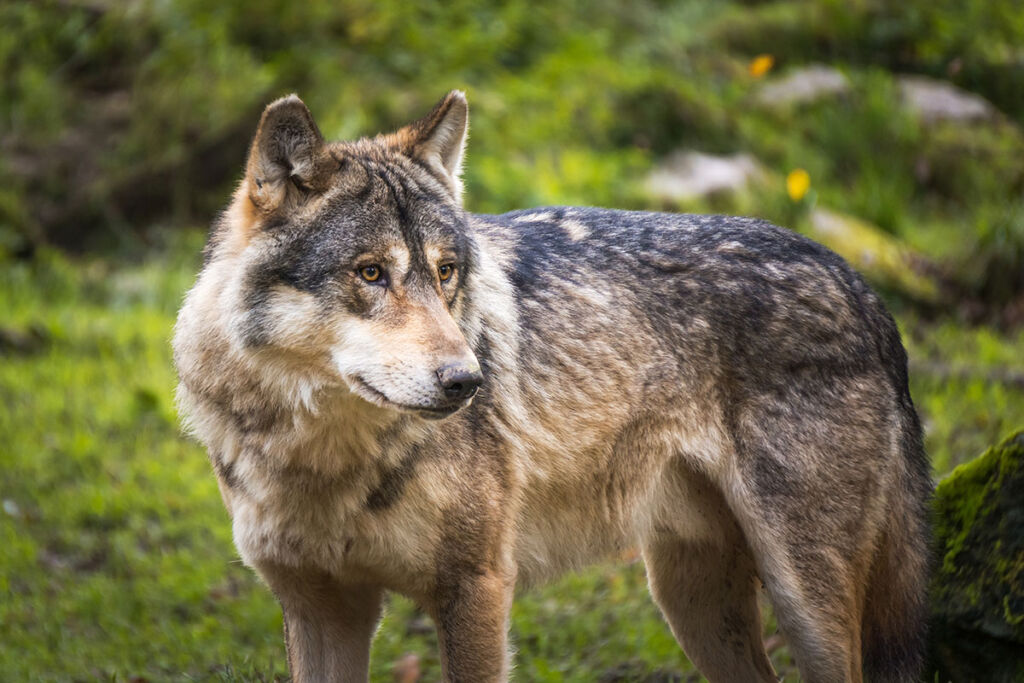Wolf, are you there?
While the return of the wolf poses real difficulties for livestock farmers, the presence of this carnivore can have both ecological and societal benefits. Jean-Louis Martin, researcher at the Centre d'écologie fonctionnelle et évolutive (CEFE), explains.

Matthieu - stock.adobe.com
Slowly but surely, wolves are making a comeback. Relatively abundant in Canada and Alaska, there are now almost 6,000 wolves in the USA, south of the Canadian border. In Western Europe, the wolf population is estimated at over 12,000 individuals, including 500 in France. The wolves had never really gone far... " this is a natural colonization of French territory from Italy, which was home to one of the population nuclei that had remained in Europe ", explains Jean-Louis Martin.
Colonization is often seen through the prism of the serious difficulties faced by livestock farmers: " The negative effects of the presence of wolves on livestock farming, such as the number of sheep killed, are visible and easy to document", explains Jean-Louis Martin. On the other hand, any benefits that the presence of wolves might bring from an ecological or citizen's point of view are often indirect and very difficult to demonstrate ...". To give a clearer picture of these advantages and disadvantages, the researcher and his colleagues have published a summary of the issues raised by cohabitation between deer, wolves and humans. It shows that while the return of the wolf poses problems, it can also bring benefits...
Deer control
If the wolf has re-established itself, it's certainly because it's now protected, but also because the past century has seen a spectacular increase in deer and roe deer, the carnivore's prey of choice. " While these large herbivores have been reintroduced in some areas, they have also naturally colonized new territories ", explains the ecologist. A "successful" return, but not without ecological and social consequences.
Left to their own devices, ungulates can wreak havoc on forests. " In studies we've carried out in Canada, we've shown that in the absence of deer predators, 90% of the undergrowth disappears ". As a result, many of the invertebrates that live in the undergrowth also disappear, followed by the birds that feed on them.
The thousands of teeth of these herbivores also limit the regeneration of young trees, while their hooves, which pound the forest, promote soil compaction. " In France, the damage caused by cervids to agriculture was estimated at around 20 million euros in 2004 ," explains Jean-Louis Martin.
Cohabitation, Road safety and health
And that's without counting the economic and human costs caused by... road accidents. In 2012 in the United States there were 1.23 million road accidents involving deer, killing 200 people and causing $4 billion worth of damage. Every year in Germany, 200,000 deer collide with vehicles, resulting in 50 deaths and 3,000 injuries, for a total repair cost in Europe estimated at over a billion euros, including 100 million for France. " Some recent studies suggest that the return of deer predators could lead to a reduction in the number of deaths resulting from these collisions ", adds the researcher.
Finally, the return of the wolf would have positive effects on... human health. Deer and roe deer are prime vehicles for ticks, whose nymphs carry diseases that can affect humans. " A significant reduction in deer density can reduce the incidence of Lyme disease," concludes Jean-Louis Martin.
Jean-Louis Martin warns : " Be careful, it's not a question of demonizing deer or giving sanctuary to wolves, simply of taking a broader view of the consequences of the presence of wolves in a context where their wild prey is abundant, and of helping to achieve better cohabitation between wolves, deer and humans ". A message that the researcher brought to the attention of the French Minister for Ecology and Solidarity at the start of the year, as part of the work of the scientific council on wolves and livestock.
Top-down or bottom-up control?
Why is the world green? Researchers have put forward two possible answers to this question: the first hypothesis is that the world is green because plants use "strategies" based on spines or toxic molecules to prevent herbivores from eating them completely. This is known as the bottom-up control hypothesis. Second hypothesis: the world is green because herbivores, anxious to escape their predators, spend a lot of time managing the risk of predation and devote less time to feeding, taking only the bare minimum without swallowing up forests. This is the hypothesis of top-down control.
To test these hypotheses, the researchers looked at a life-size laboratory: an archipelago in Canada where some islands were colonized by deer and others remained untouched by these large herbivores. We found that, in the absence of their predators, the deer emptied the undergrowth of its vegetation and caused a decline in biodiversity," explains Jean-Louis Martin, " a result in this case consistent with the hypothesis that top-down control of herbivores is needed to keep the world green".
Hence the ecological importance of wolves, bears, mountain lions, bobcats and other large carnivores. "If we favor a world without predators, we're eliminating something that has played an essential role in the construction of life as we know it. You miss just one species, and everything's turned upside down.